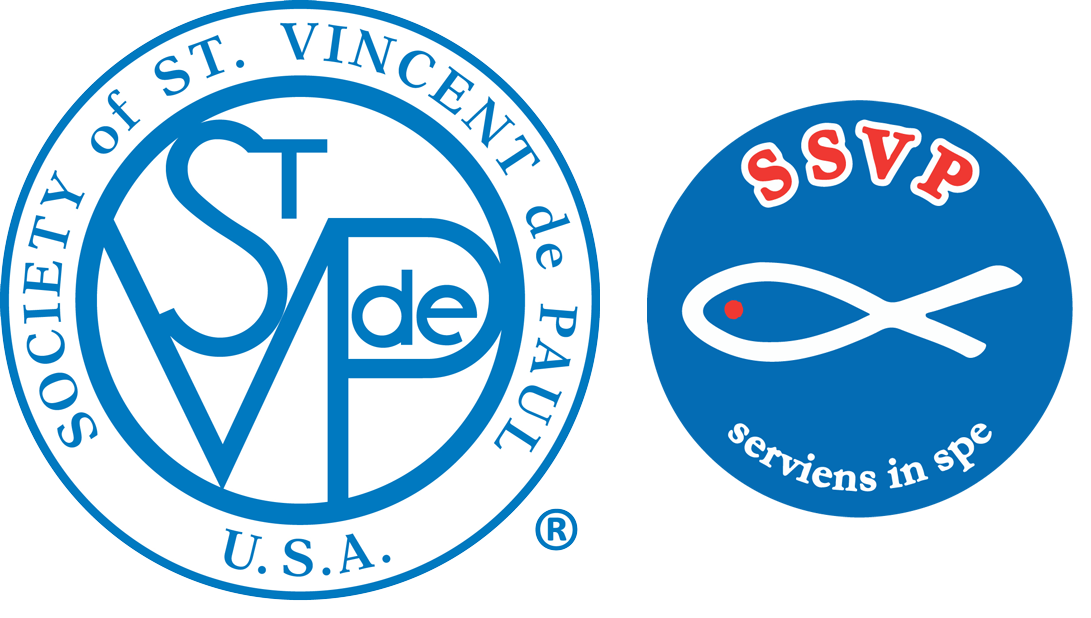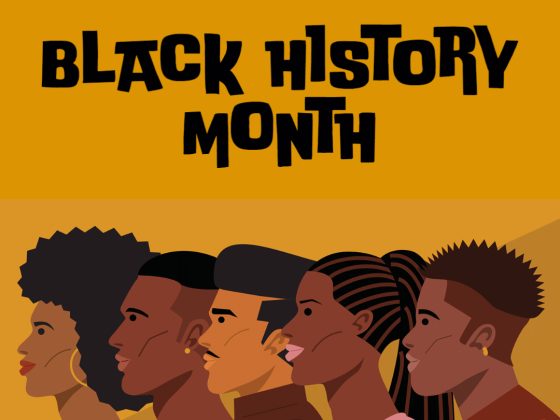Black History Month Series
Presented by the SVdP African American Task Force
Father Tolton: How Persistence Propelled Him to Priesthood
“Since the Bible says we ALL were made in the image and likeness of God, “Why isn’t my likeness accepted by others?” “Why aren’t there clergy that look like me?” “Am I inferior?”
These are some of the questions with which many Christian people of color wrestle.
I do not know if Augustus Tolton asked these questions, but I do know he did not allow others’ lack of appreciation for his race to prevent him from being faithful to his master’s call. Thankfully, rejection by society does not mean rejection by God.
Father Tolton came from a lineage of African Americans who had been enslaved. His grandparents Augustus and Maltida Chisley were enslaved by a Catholic family, the Mannings. When the Mannings purchased people as slaves, they had them baptized and instructed as Catholics.
The Chisleys had a daughter named Martha Jane. At 16 years old, Martha was given away as a wedding present (as a piece of property) to a Manning daughter, Susan. Susan married Stephen Elliot in 1849, and the couple with all their possessions moved to Missouri. Martha Jane Chisley would never see her parents again.
Martha Chisley’s new owners, the Elliots, lived adjacent to the Hagers, another Catholic, slave-owning plantation. On the Hagers’ plantation lived the slave Peter Paul Tolton. Martha and Peter married (they required their masters’ permission) and have several children. Their son Augustus was born April 1, 1854.
Life as a married slave was rough. Besides the endless work, the Toltons had the care of their children to worry them. Peter desired a way out of this inhumane life for his family. The thought of them all running away intrigued him but the reality of the brutal physical punishment that owners ordered when a slave was caught paralyzed him. Slave owners often organized groups to hunt people who ran away, with orders to shoot, maim (cut off a foot), or even kill any slave not in chains after night fall.
Tension in the United States around the subject of slavery was at an all-time high. As the nation entered into a civil war, many slaves began to escape to join the Union Army and fight for freedom. One was Peter Paul Tolton. Sadly, Peter and his family would never be reunited.
While Peter was fighting for freedom, Martha received word that the plantation owners might put her children up for sale. Her memories of being dislodged from her parents must have tormented her because she decided to risk her and her children’s lives and run away. By a series of miraculous events, Martha and her children evaded starvation, slave traders, and Confederate soldiers. With the direction of others, the Toltons reached Quincy, Illinois, where abolitionists welcomed and aided people escaping slavery. Martha Tolton found a family to move in with, and soon thereafter she began working at a tobacco factory, making cigars. Nine-year-old Augustus and his brother Charley worked at the factory too.
In Quincy, the Toltons began to attend St. Boniface Church. Most of the parishioners spoke German, so the homilies were in German. St. Boniface’s priest, Father Schaeffermeyer, would summarize in English the homilies for the small group of Black people who attended his parish. Martha sent Augustus to attend the St. Boniface School, at the time an all-white school. Between the bullying of classmates and their parents’ threatening letters to the priest, Augustus’ school life was unbearable. The cruelty from his peers would cause young Augustus to break down crying. Eventually Father Schaeffermeyer and Martha Tolton agreed that it was doing more harm than good having Augustus attend and withdrew him. It would be several years before he would go to school again.
Four years after the St. Boniface debacle, Augustus, then 14 years old and nicknamed Gus, reenrolled in school. This time he attended an all-Black school.
Mary also found the family a new church to attend, St. Lawrence. The pastor there was a strong-willed, determined Irishman, Peter McGirr. Father McGirr had heard about the St. Boniface incident and invited Gus to attend St. Lawrence School. He believed Gus needed a Catholic education and reassured Mary that he would personally see to it that her son would have no trouble from his classmates. Mary agreed to Father McGirr’s request. St. Lawrence School was run by the Notre Dame Sisters, and they saw to it that Gus experienced no trouble at the school.
Father McGriff received plenty of complaints from his parishioners. Like at St. Boniface, the parishioners threaten to remove their students and financial support from the parish. Father McGriff failed to give in to these ploys. Better yet, he responded with sermons about loving your neighbor as yourself. Eventually, the complaining stopped, and Gus began to flourish.
Gus Tolton was a devout young man. He learned the Latin Mass and began serving at daily Mass. Father McGriff and Gus discussed the possibility of him going into the priesthood. Unfortunately, there were no known Black priests in the United States. Several clergy members had shown interest in helping Gus get seminary training, including St. Boniface’s pastor, Father Schaeffermeyer. Though these clergymen’s financial support was noteworthy, Father McGriff couldn’t find one United States seminary that would be willing to accept a Black student. To me, here seems like a good place to give up, but that was not the case for the young Tolton or Father McGirr.
Under Father McGrirr’s directive, Tolton began to train unofficially. Different priests helped tutor the young man. Father McGirr never gave up on the idea of Tolton receiving an official seminarian experience. With the help of another priest, Father Richardt, Fr. McGrirr got Tolton accepted at the Propaganda Seminary in Rome, Italy. Tolton was thrilled!
On February 15, 1880, 25-year-old Gus Tolton left everything and everyone he knew to pursue his dream of being a priest. Nearly a month later, Tolton arrived in Rome. This moment must have been surreal to him. Everything he had endured in life had brought him to this place. Around seventy seminarians from around the world were part of his class. For once in his life, Tolton felt no racial discrimination.
With nothing holding him back, he excelled, and in 1883 he received the Catholic rite of Tonsure. This ceremony celebrated the seminarians’ willingness to become a slave of the people of God. No one may have known better than Tolton what this meant. Tolton also took the Propaganda Oath, pledging that he would be willing to go anywhere he was sent to propogate the faith. Most had believed that Tolton would be deployed to Africa. To his surprise, upon his ordination, he was told that he would be going back to the very place that had rejected him, the intolerant United States. Cardinal Simeoni made this decision and thrust onto Tolton the title “America’s First Black Priest.”
To say Tolton was disappointed with his deployment to the United States is an understatement. He knew the difficulties this decision would cause. Fresh in his memory had to be white Americans’ prejudice and persecution. And he had to go serve them. Nonetheless, Tolton decided he was going to go back and serve all with the love of God.
On April 24, 1886, Father Augustus Tolton was ordained. Cardinal Simeoni made arrangements for Father Augustus to celebrate his first Mass in the great Basilica of St. Peter in Rome. On June 13, 1886, Father Tolton left Rome and headed back to his home country.
Back home Father Tolton was welcomed with a chorus of cheers from his supporters. Father McGirr had chartered a railroad car to take friends of all races to meet Father Tolton at the train station. Many clamored for Father’s blessing; he made sure to first bless his mother Martha, the woman whose Catholic faith had governed every aspect of his life.
Father Tolton was assigned to St. Joseph’s Church. He led a multiracial congregation and quite often at St. Joseph it was standing room only. Father Tolton’s assignment left some furious, including Father Michael Weiss. Father Weiss was jealous of Father Tolton’s recognition and used racially charged words when referring to him. Father Weiss hated that white people were giving financially to Father Tolton’s ministry. Father Weiss used his influence with the bishop to get the bishop to declare that Father Tolton could no longer minister to white people. Only people of color were permitted to attend his services. This decision was financially crippling to St. Joseph’s.
Eventually Father Tolton got transferred to St. Monica’s in Chicago, where he spent the rest of his days. Father Tolton rolled up his sash and got to work. He spent most of his time ministering to the marginalized.
Father Tolton died of heat stroke in 1897, at the tender age of 43. More than 100 priests attended his funeral. Like his services, it was standing room only. Many came to pay respect to the trail blazing, people loving priest from Quincy.
Father Tolton’s impact on American history is undoubtedly profound. His career paved the way for individuals like Cardinal Wilton Gregory, who was just appointed America’s first African American Catholic Cardinal.
Father Tolton’s story is truly inspiring because though he endured many challenges and hardships, he never relented. His ability to push past pain (emotional and physical) to his place of purpose was astonishing. He never gave up on his dream; he never gave up on God! As I learned about Augustus’s life, I couldn’t help but be captured by his and Father McGirr’s resolve.
One can only imagine how much further and what a bigger impact Fr. Tolton would have had if he had not encountered racism from his own Christian brothers and sisters. Nonetheless, this story does highlight the importance of having people in our lives that advocate for and mentor us. Several individuals in Father Tolton’s life joined themselves to him and accompanied him to his dream. We all need individuals that see our God-given gifts and help us find spaces and places to use them. We all should endeavor to seek those in need (and that are often ostracized) and find ways to propel them forward. This is the SVdP way!



Beautiful and inspiring story. Thanks for telling us of this heroic priest